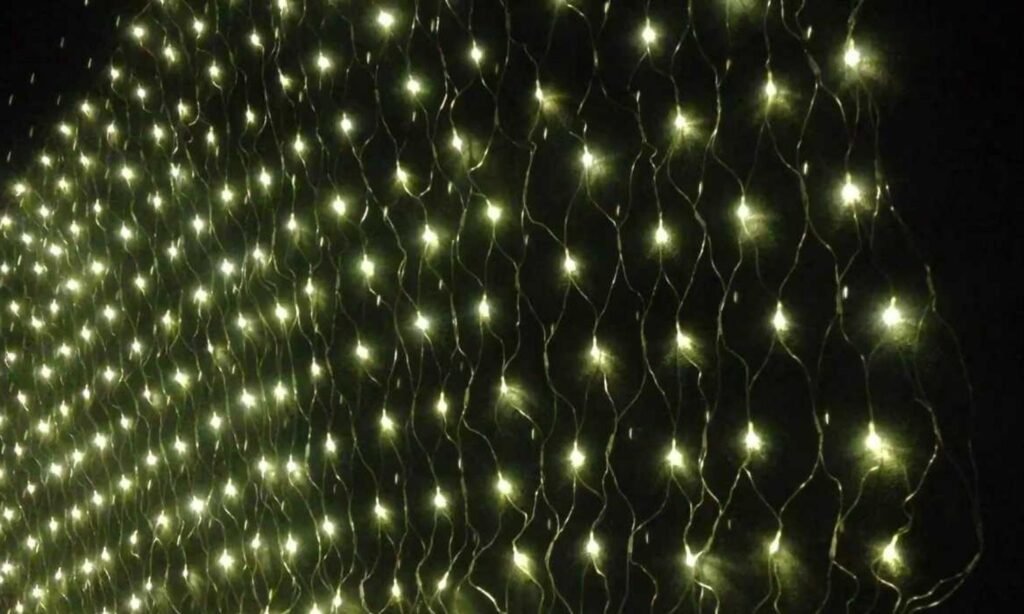You may be wondering what mesh lights are, and how they can help improving your home garden lighting. Before we get into that, it’s important to understand what exactly mesh lights are and how they work. Luckily, we’ve found an article that does just that! It goes into detail about the different kinds of mesh lights (LED and HID) and explains why they are beneficial over other kinds of light sources.
When you want to add a touch of style to your home, there are a variety of ways you can go about it. You can bring in real plants or flowers. Otherwise, decorate with artificial plants and flowers, if you’re worried about keeping them alive with your lack of green thumb. Another option that can add some flair to your space while also saving money on electricity bills is mesh lights, which add beautiful light patterns in any room of your house. Read on to learn more about the best mesh lights on the market today!
What Are Mesh Lights?

Looking for a more affordable lighting option for your home? A mesh light, also known as a rope light, is one way to do it. These lights are made up of small strands that are strung along lengths of wire and then encased in plastic. Since they can be wrapped around just about anything, they’re often used to illuminate outdoor spaces. And since you have so much freedom in terms of where you put them, there’s a lot you can do with them—use them to decorate a backyard pergola or an indoor ceiling fan. They’re great for creating ambiance during nighttime social gatherings.
Benefits of Mesh Lights

As their name suggests, mesh lights are grids made out of metal that’s sandwiched between two layers. They’re small holes that help regulate heat and block pests. Not only do they stop insects from crawling through them. But they can also keep even determined squirrels at bay. Their open design allows heat to escape more easily, which means you’ll save money on energy bills by keeping your home cool in summer and warm in winter.
Depending on how you install them, mesh lights are also effective at redirecting light downward instead of letting it beam upwards into your eyes when you walk underneath them. Plus, these kinds of lights are an ideal solution for anyone who has ever had problems with exposed bulbs catching litter or other airborne objects. And because you don’t have to worry about hanging wires or installing complicated wiring systems. Mesh lights provide a quick way to brighten up any outdoor space!
Buying Guide – Things to Consider When Shopping for Mesh Lights

Brightness – How bright are they? Are they rated for specific hours, or do they use LEDs or incandescent bulbs? Are you looking for something dim enough to set a romantic mood, or would you rather light up your entire house with them?
Size – Can these be placed anywhere in your home because they’re so compact? Or are you looking for larger options that can provide additional lighting at different heights around your room?
Price – What’s an affordable price point that will suit your budget without compromising quality? We’ve included our top picks across several different price points so you don’t have to stress over what fits within your budget.
Color – Do you want multi-colored lights that produce a variety of colors from red and purple to blue and green? Or would you prefer single-color lights if they come in white or yellow shades? Features – What special features will enhance your mesh light experience? Consider things like ambiance modes if you want more than just simple white lighting; however, keep in mind that adding unique features could increase pricing substantially.
How To Choose The Best Mesh Lights

Before I get into my specific choices for mesh lights, I wanted to give you a quick overview of some things to keep in mind when shopping. There are basically three main factors that go into making a good mesh light: coverage, brightness and ease-of-use. Take a look at all three factors below.
Coverage
Refers to how large an area is covered by each light source. If you’re planning on setting up multiple mesh lights in your grow room or tent, you want to make sure they’ll cover most or all of it. Different lights will have different coverage sizes, but most range from about two square feet to about four square feet per light.
Brightness
Refers to how much power a single unit can provide. A larger bulb translates into more light being thrown onto your plants, which helps them grow faster and healthier. While not necessarily related directly to growth rate, ease-of-use also plays a big role in picking out a quality product. If a system is difficult to assemble or use incorrectly (and potentially damage), there’s very little chance that it will be worth its weight long term, no matter what else it might do well.



Recent Comments